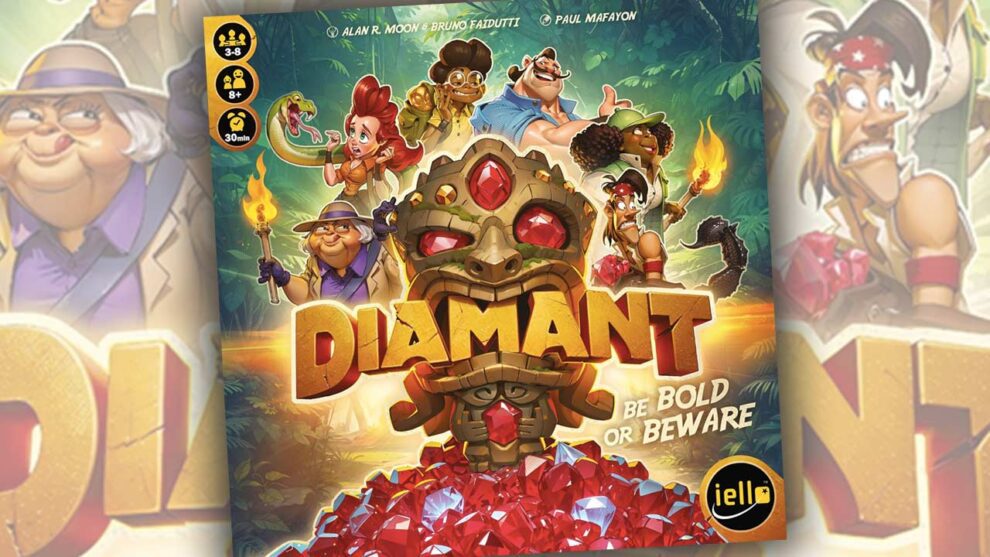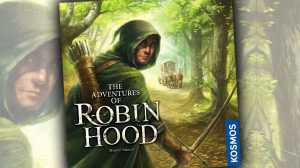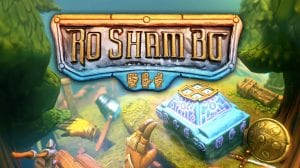Disclosure: Meeple Mountain received a free copy of this product in exchange for an honest, unbiased review. This review is not intended to be an endorsement.
A few years ago, I had the chance to play Incan Gold (2005, Eagle-Gryphon Games) with another family in the Chicago area. Incan Gold is a classic push-your-luck game, tied to players who travel through a mine shaft for treasure. When hazards start to appear in the mine, players have lots of chances to exit the dungeon with any gold they have found so far. If a player stays in the mine for one hazard too many, they lose all the gold collected on that run. But if they get out early, they have the chance to keep as much as they have found so far. The temptation to keep going is the reason you play games though, right?
On that first play, we did a six-player game of Incan Gold—three adults, and three kids all aged eight at the time—and while the game took a while, I appreciated its attempts at a push-your-luck narrative that had a few fun moments.
During our meeting with IELLO at SPIEL 2024, the marketing rep for IELLO handed me a copy of a game called Diamant…at first, a game title I did not recognize. When I finally got Diamant to the table, I started reading the rules and thought “man, this sounds a LOT like that game I played with the kids a few years ago!” Well, friends, Diamant IS Incan Gold, and vice versa. Depending on the region, the name of this property is typically one or the other, based on the original design by Alan R. Moon (Ticket to Ride) and Bruno Faidutti (Citadels).
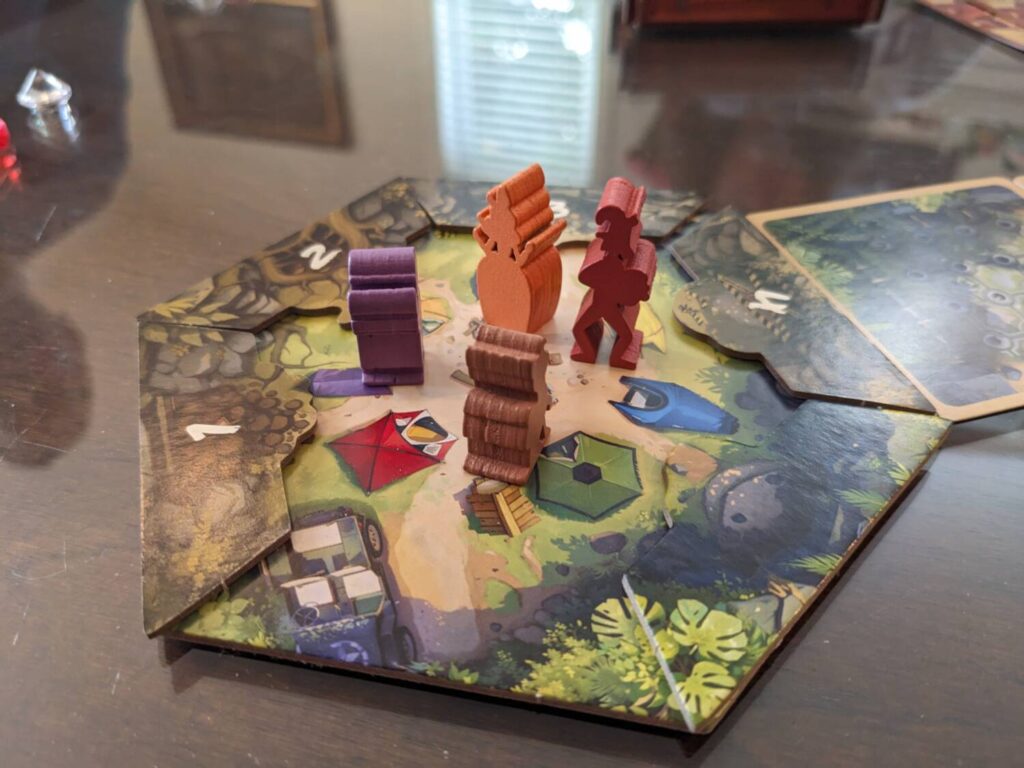
In Diamant, the only thematic change from Incan Gold is that players are exploring jungle paths instead of mine shafts, the hazards are now traps, and the treasure shifts from gold bars to gems. Otherwise, it’s the same game—all players start at the entrance of a jungle path, and expedition cards are slowly revealed as either treasure cards or trap cards, forcing players to make a decision after each expedition card about whether to stay or go.
There are 15 trap cards in the deck, with three copies of each of the five trap types. As cards are revealed and players decide to either return to camp or continue adventuring, whenever a second copy of a trap matching a previously revealed trap appears, the round is over and anyone left in the jungle path loses all gems collected during that run.
After five rounds, the player with the most gems secured by leaving the jungle wins. This 2024 version of the game has cute treasure chests to store player winnings, the white and red gems are chunky, and the artwork on the cards supplied by artist Paul Mafayon (both the expedition cards, as well as the cards players use to signal whether they are staying in the jungle or not) is perfect.
As a production, the 2024 version of Diamant is fantastic. The game? Meh.
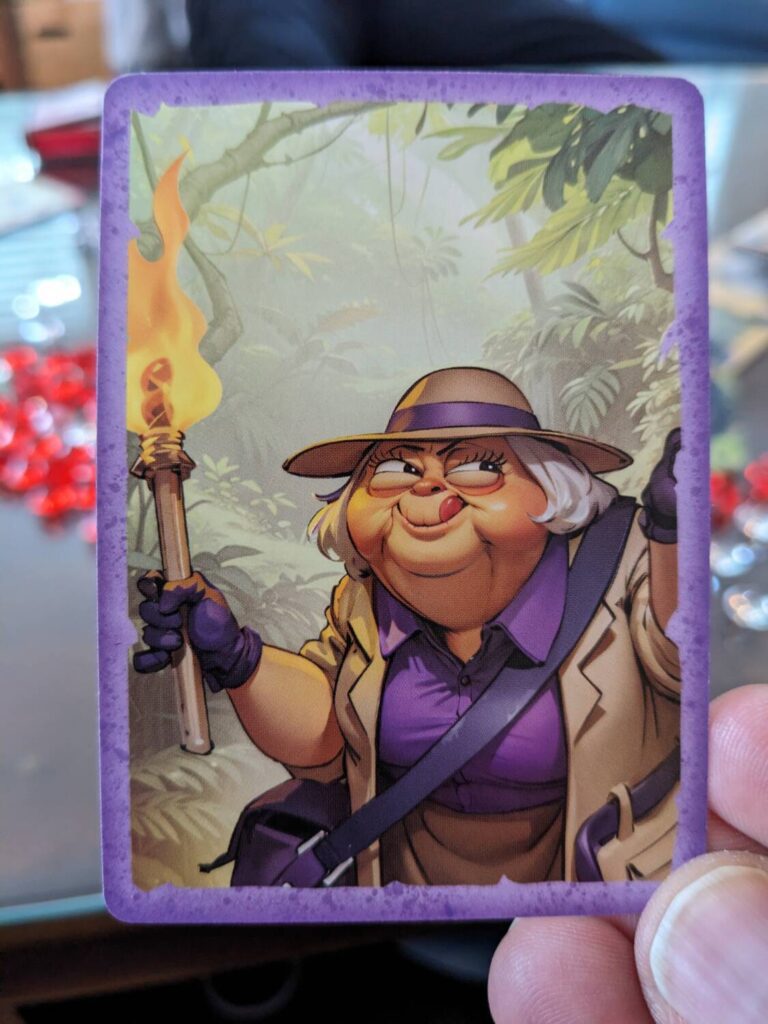
Somewhat Unsatisfying
I’ve now played Incan Gold / Diamant three times, at three different player counts (three, four, six). Each time we’ve played, two eerily similar things have happened.
First, at least two of the five rounds in each game ended with two matching traps revealed before anyone got even a single gem to take home. That’s right—there was no luck to push, because no one had any treasure yet.
This is a possibility based on the game’s rules. One reason this happened is a kink in the way gems are distributed, because gems must be handed out evenly to players still in the jungle. If a treasure card shows, say, nine gems in a five-player game, each player gets one gem placed in front of them, and the remaining four gems sit on that treasure card until at least one player decides to leave the jungle. But if this is the first card added to that round’s expedition, players in my games have always wanted to collect more gems…no one wants to leave the map with such a small amount of treasure.
The second thing that has happened in every game is that someone has said some version of the following words: “Megaland does this better than Diamant.”
In one game, it was my son. In another game, it was me, after my son reminded me in that previous game that Megaland is basically Diamant, with a treasure-spending phase between dungeon dives. (Everyone I know likes to spend treasures to get stuff and powers, apparently.)
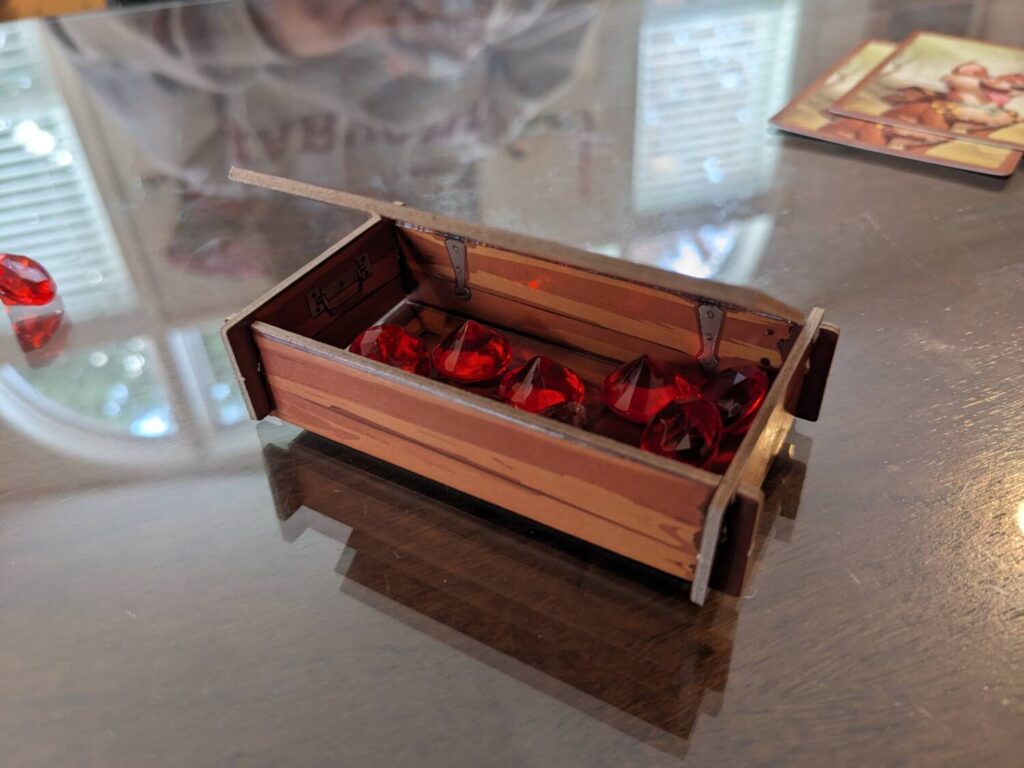
Diamant comes from a simpler past—the design turned 20 this year!—and for that, I truly applaud the game. Diamant is a 15-minute dungeon dive that accommodates as many as eight players. It’s a game that greatly rewards the player willing to accept the most risk, to the point where I only play until I am the last person left in the jungle each time. It’s just more fun to roll the proverbial dice, and that makes the game more interesting, even if the decision space is quite limited.
When one player has a big lead in gems, everyone at the table knows it, which forces everyone else to take substantially greater chances in successive rounds. That forces the game in a certain direction, but the game is so fast that I’m willing to let it ride.
But the commentary from everyone who tried Diamant was universal: it’s alright. Totally fine. “It was OK to play it, but I would never choose it.” My 10-year-old won our second play of Diamant, and I was surprised how quickly they wanted to play something else as we tallied final scores. “It was alright, but it wasn’t that interesting.” Winner’s bias didn’t even have time to set in!
Managing expectations is key here. I think Diamant doesn’t work with core hobbyists as well as it works with those who do not play a lot of games. There’s just not enough meat on the bone for a player who plays a lot of other dungeon-style treasure hunts. But for your uncle, who is not that interested in playing your supposedly silly-looking hobbyist games after Thanksgiving dinner, Diamant might actually fit thanks to the quick playtime and the light ruleset.
Diamant is not a game I’ll revisit, but I have to say that everything about the production of this new version is quite nice. If you insist on owning a version of the game, this 2024 IELLO version is the right call. If you are looking for something to do with your collected treasure in a game that only takes about 15 minutes longer to play, Megaland does everything Diamant tries to do in a more interesting package.


